Contents of a Slavonian Easter Basket: From Eggs to Green Onions
15th of April 2022 - The most important Christian holiday is almost here which means plenty of food and traditions that have been part of Croatian culture for centuries are in focus. A look at the contents of a Slavonian Easter basket.
With Lent being over on Palm Sunday, Holy Week and the final days before Easter have begun. Of course, that means believers who participated in relinquishing and fasting during Lent can finally start eating normally, except on Good Friday when fasting is strictly prescribed. Preparations for Easter include a lot of cooking and preparing sweet pastries to celebrate Jesus’s resurrection. Good Thursday is dedicated to the remembrance of Christ’s Last dinner and no one can work on their soils or crops. As already mentioned, Good Friday includes a strict fast with only one proper meal allowed, which symbolizes Jesus’s torment and death. After Good Friday, Good Saturday is reserved for silence and preparations of said meals that have everything from heavy meat to spring vegetables and more. However, the most important part of the Easter celebration is definitely an Easter basket, which contains a variety of foods reserved for blessing and later for Easter celebration, most commonly as a breakfast on Easter itself.
Easter Eggs
Most things in the basket are definitely Easter eggs (pisanice), or boiled chicken eggs with beautiful handmade designs that differ from family to family. This custom of decorating and gifting eggs was known throughout Europe, especially among Germans, Scandinavians, and Slavs. Even its age is confirmed by archeological grave finds. When it comes to Christianity, the egg is a symbol of the new and eternal life that Jesus made possible for people through the resurrection. In Croatian traditional culture, the custom has remained to this day. In the past, only domestic homemade colors were used for painting eggs and they were obtained from broccoli, onion peel, nettle, various grasses, and many more. Aniline dyes became popular much later. Wax was applied to the egg by a special funnel-shaped pen or pinhead; this technique also made it possible to obtain multicolored ornament. These traditional ways of painting Easter eggs came back - more and more people fall back to old customs because of healthy and more organic ways of painting. On Easter morning, eggs are put to use - children break eggs to determine who has the strongest one.
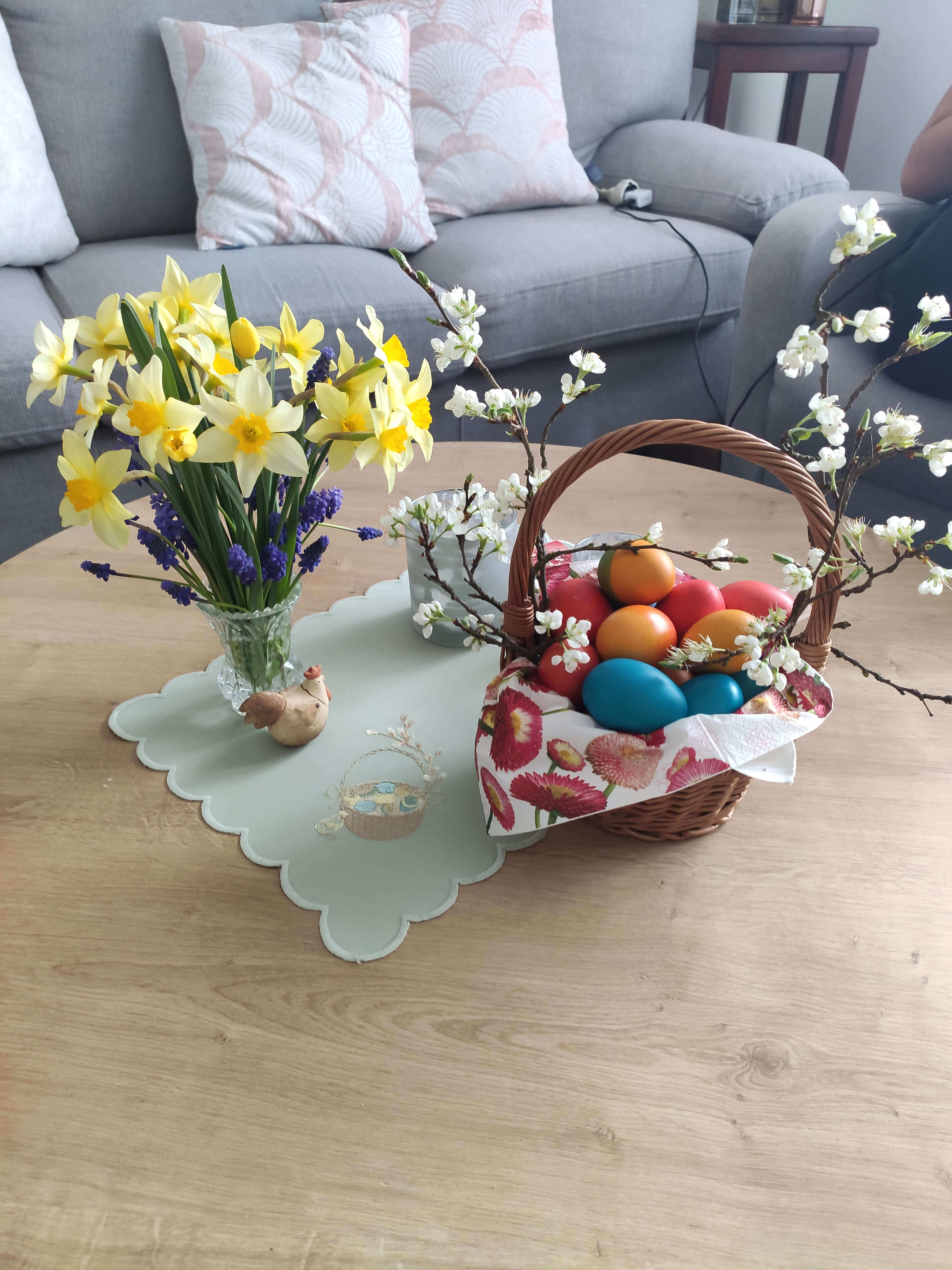
Colored Easter eggs and spring flowers on Easter (photo credit: Private album)
Unleavened bread
As we know a lot of Christian traditions are shared with Jewish customs and unleavened bread is part of that as well. It symbolizes Christ’s body and according to Bible, was present at Christ’s Last dinner. There are a lot of variations of bread throughout Croatia like normal pogača, pinca, however, unleavened bread is a customary Easter bread in Slavonia and represents sacrifice. Its texture is somewhere between hard and soft and has a neutral flavor which fits amazingly well with other Easter basket components.
If you’re interested in making this bread, here is my family’s recipe that’s been used every Easter for decades:
0,5 kg of smooth flour
1 package of baking powder
1 teaspoon of salt
4 egg yolks
1 egg
1 tablespoon of pork lard
10 dag of butter
Method:
Mix with milk so that it is neither soft nor hard. Let it sit for 10 minutes, after that put it in a small bowl with a diameter of 18 cm. Grease the bread really well with lard and put the bread in the oven preheated to 180°C. Bake it for 30 minutes, take it out, coat it with egg yolk and milk mixture using a brush, put it back in the oven, reduce the temperature to 150°C and bake it for 25 minutes more.
There you go! You have a proper Slavonian bread that’s part of every Easter basket.
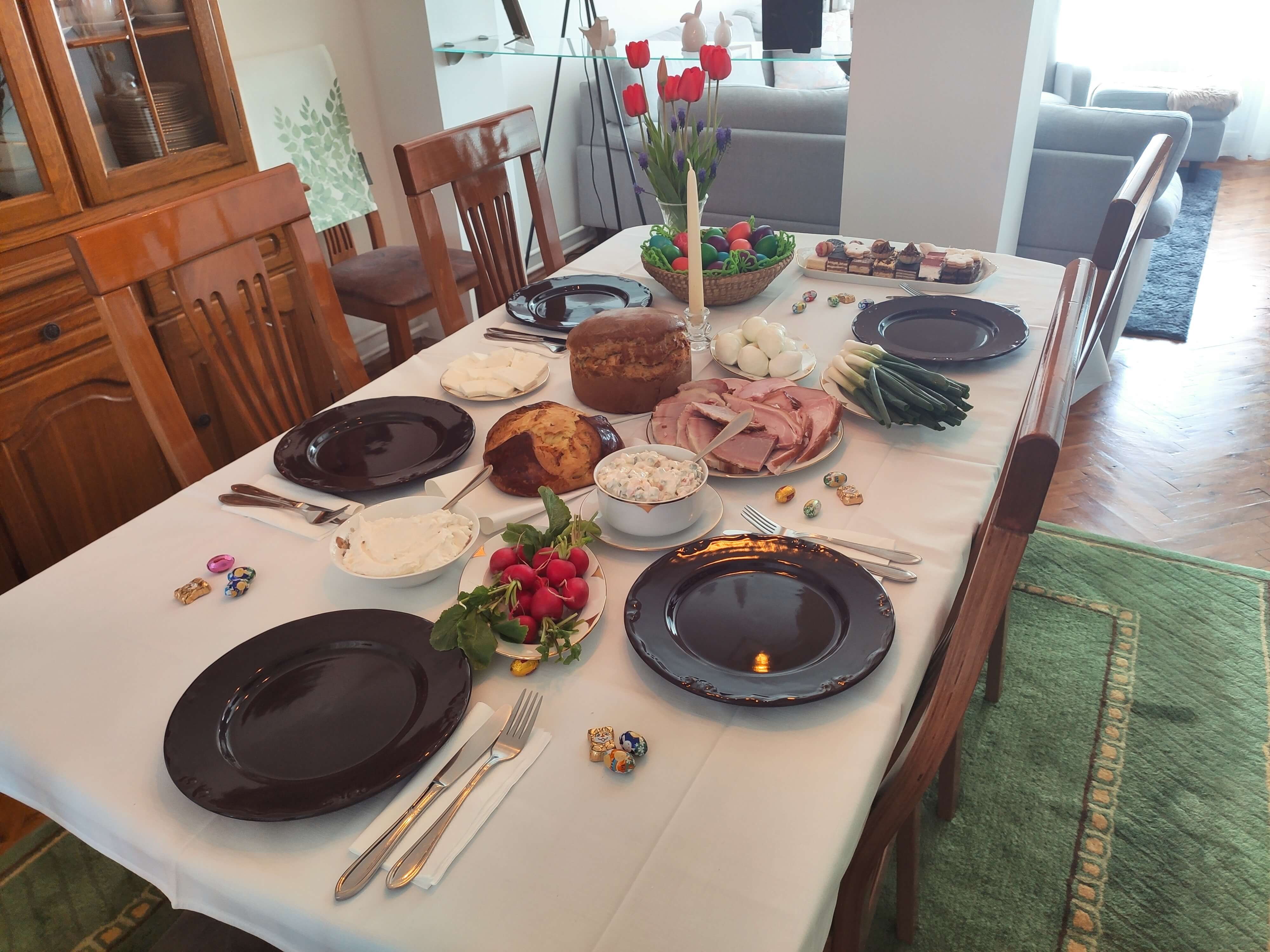
Easter breakfast with food from Easter basket (photo credit: Private album)
Ham
Fragrant-cooked ham is certainly the main star of the Easter table and what evaluates the quality of its preparation is juiciness. The type of meat is really important but the best is definitely pork meat or rather pork leg which is considered the “real” ham. Other than classic cooked ham that we know and love, there is an alternative - ham wrapped in pastry. Again, its preparation varies from family to family and the quality of the meat is determined by the financial status of the people who prepare it.
If you’re interested in the preparation of cooked Easter ham, check this recipe here.
Radish
The so-called spring queen of health and a vitamin bomb. Although radish is primarily associated with the Easter table, many people buy this vegetable because of its rich nutritional composition and medicinal properties. Indispensable food of every Slavonian Easter basket.
Green onion
If it's planted before Spring, green or young onions are definitely an unavoidable vegetable for the Easter basket. Strong, spicy, and its intensive smell with ham bring something really special to every Slavonian household on Easter. Like radish, it is a great ingredient in a variety of Easter salads.
Sweet cakes and pastries
Last but not least, cakes and pastries are a must in every Slavonian Easter basket. From usual pies like cakes like mađarica, chocolate pie, white pie, honey pie, so-called Katherine (Katarina kolač), and coconut-walnut cubes that were and still are a staple for Slavonian desserts through decades, small cakes, pastries, and cookies are getting more and more popular in recent years. Likes of išleri, baskets (košarice), rum balls, linzers, triangles and so many more. Cherry or apricot strudel is also a recent pastry baked and consumed on Easter. Breskvice (peaches) as well - signature Slavonian cake.
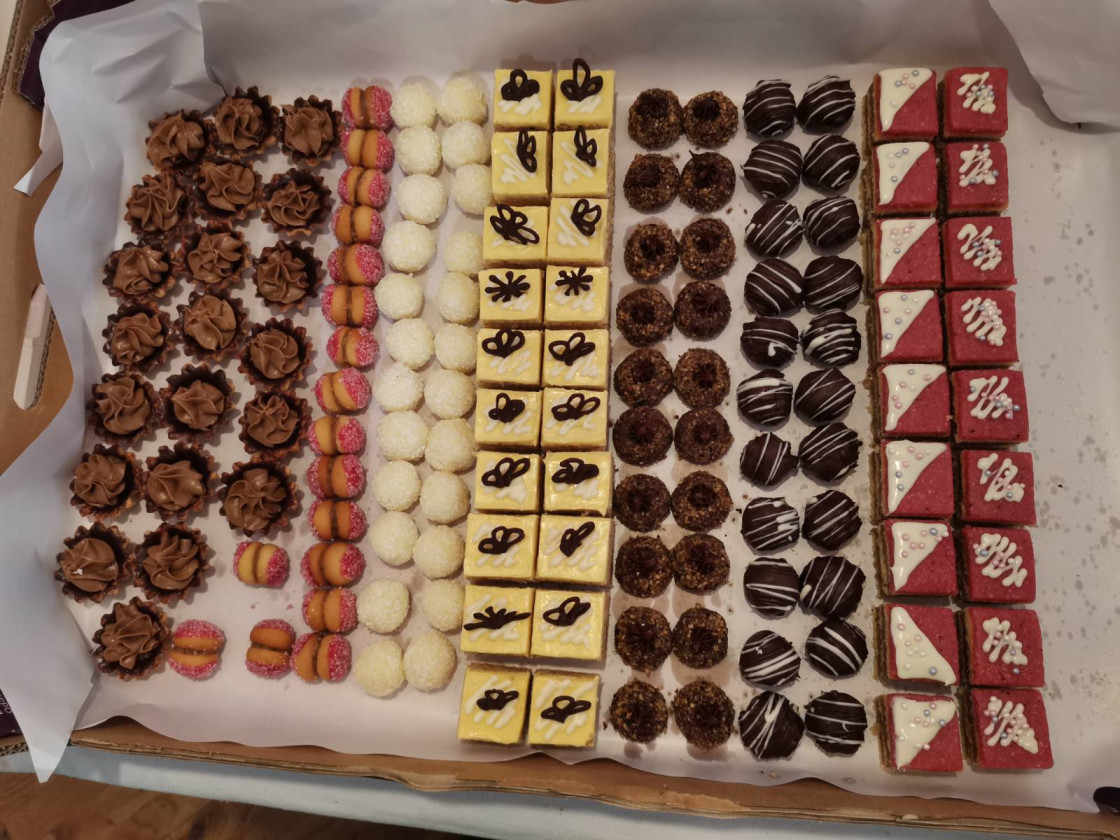
Sweet cakes and popular pies in Slavonia (photo credit: Private album)
Salt is also part of the blessed Easter basket with candles that will be lit on Easter breakfast and other various items that believers want to bless.
As said in the beginning, Easter is the most important Christian holiday. It celebrates Christ’s sacrifice and resurrection. Throughout the centuries, Croatians managed to save huge parts of their cultural and traditional heritage and it’s not a coincidence that Easter customs are one of the oldest traditional practices in Croatia’s history. It doesn’t matter if you’re not a believer, everyone is welcome to try the contents of a Slavonian Easter basket, take it, and in the end, try to make these delicious meals for themselves. At the end of the day, this is the time, not just for sacrifice, but for sharing and love as well.
Sretan Uskrs!
For more about lifestyle in Croatia, visit our dedicated TCN page.
Good Friday With Fasting Meals For Citizens From 10 AM in Vinkovci
14th of April 2022 - The City of Vinkovci, the Independent Trade Union (DZZP) and the Vinkovci Technical School, along with the support of multiple companies from Vinkovci, have announced the distribution of fasting meals for all citizens on Good Friday.
As Novosti.hr writes, the now traditional event that occurs every Good Friday before Easter will have fish and potato salad on the menu this year as well. Future chefs, more precisely the students of the Vinkovci Technical High School will be in charge of preparing the food.
Mayor Ivan Bosančić will also take part and help in the morning food giveaway in front of the Vinkovci Gymnasium (School) from 10:00 on Vinkovci’s main square. He emphasised that meal itself is not the main motive for gathering people together, but that going out to the square and spending time together in the festive spirit is the point, as we celebrate the greatest Christian holiday, Easter.
Everyone is happy to respond when it comes to celebrating traditions like this - the Trade unionis, the City, various donors and of course, the hardworking student chefs who will prepare more than one thousand portions of meals for the occasion. Whether it’s Good Friday or Christmas Eve, a sense of togetherness is the most valuable part of it all.
Let us also remind ourselves that Good Friday is one of the two days of strict fasting in the liturgical year, with Ash Wednesday when Lent begins.
Fasting for Catholics means taking only one full meal a day as opposed to fasting when eating the usual three meals except meat. Strict fasting on Ash Wednesday and Good Friday isn't just fasting, but the practice of abstinence at the same time, which means believers on that day eat only one full, modest and simple meal to the brim. Good Friday is a day of renunciation and penance and in that sense, the meal served on the table should be exactly like that.
For more, check out our lifestyle section.
"Ash Wednesday" Begins Lent: Food Eaten in Time of Penance in Slavonia
March 2, 2022 - Wednesdays normally do not have a particular meaning but for Catholics, today means the start of Lent, which is a time for mourning, renunciation, and penance. Food is light, “sacrifices” are made, and forty days until Easter has begun. A look into what Slavonians eat during Lent.
If February in Croatia is known as a month of handful feast food, the month of this year’s March represents “sacrifices” Catholics are willing to take to “cleanse” themselves before Easter and the resurrection of Jesus Christ. Those sacrifices usually involve food - no meat, sweet desserts, and other types of food we love the most. Today's Clean Wednesday or “Ash Wednesday” marks the so-called commanded fast, which means strict fast requirements as a symbol of Jesus’s sacrifice during time spent in the desert before his eventual resurrection (Easter). Its name “Ash Wednesday”, comes from the rite of cremation, when priests sprinkle ash on the heads of the faithful or, according to the customs of the region, make the sign of the cross on their foreheads with ash. Sprinkled ash used on these rites is last year’s olive twigs blessed on the Palm Sunday (Cvjetnica) - a feast that commemorates Jesus’ entry into Jerusalem.
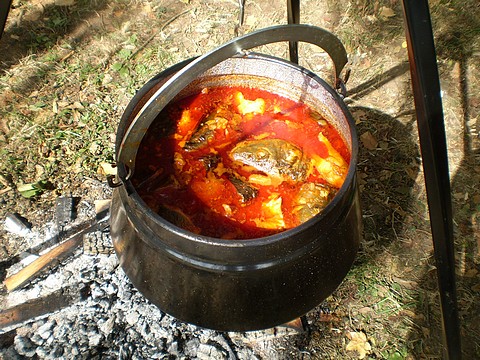
"Fiš" - traditional Slavonian food. (Najbolje u Hrvatskoj by vikendplaner.info)
But enough of that, let’s get to the most important point of this article. Food. Because of everything mentioned, people needed to find ways to eat food that would match the requirements Lent demands. Of course, the diet of the people differed both because of preferences and differences of working classes. The most popular Lent dish is definitely Fish stew (Fiš-paprikaš or in Slavonia just Fiš). No holiday of this kind in Croatia can pass without fish stew. It is so popular and an integral part of the Slavonian culture that competitions are regularly held throughout Eastern Croatia (Fišijada), for the title of the best "fiš” makers in the region. As its name suggests, the fish stew is prepared from fish, especially river fish which means it is common in regions where rivers are of great importance. It is believed that it was brought to the Slavonian area by immigrants from southern Germany, whereas Baranja got their “fiš” from Hungarians that inhabited that area. Fish stew is traditionally prepared in a copper cauldron hung over an open fire. Water is put into the cauldron with sliced pieces of river fish such as catfish, carp, pike or perch, and (a lot of) onion, and everything is boiled together on the fire. Just before the fish is cooked, spices are added to the water to give stew its characteristic color and spiciness. It is, of course, ground sweet and hot paprika which is often used in Slavonia and Baranja. The “fiš” is usually cooked for twenty more minutes with the addition of other ingredients like salt, tomato sauce, and more and in the end, it is served with homemade noodles and special homemade bread.
Nevertheless, every Slavonian family has its own recipe so it's hard to pinpoint a perfect one, however, it brings even more charm and beauty to this traditional dish. Families with less usually cook “fiš” with only one type of fish, mostly carp and catfish.
River fish is also really healthy, especially if it's cooked in the oven. It retains the maximum of useful components in the form of vitamins and minerals. Most importantly, the dish is simple enough and does not require inaccessible ingredients. It is usually served with potato salad which can vary, of course, depending on the household. Fried fish is also viable during Lent but strong believers are avoiding it for scarcer meals.
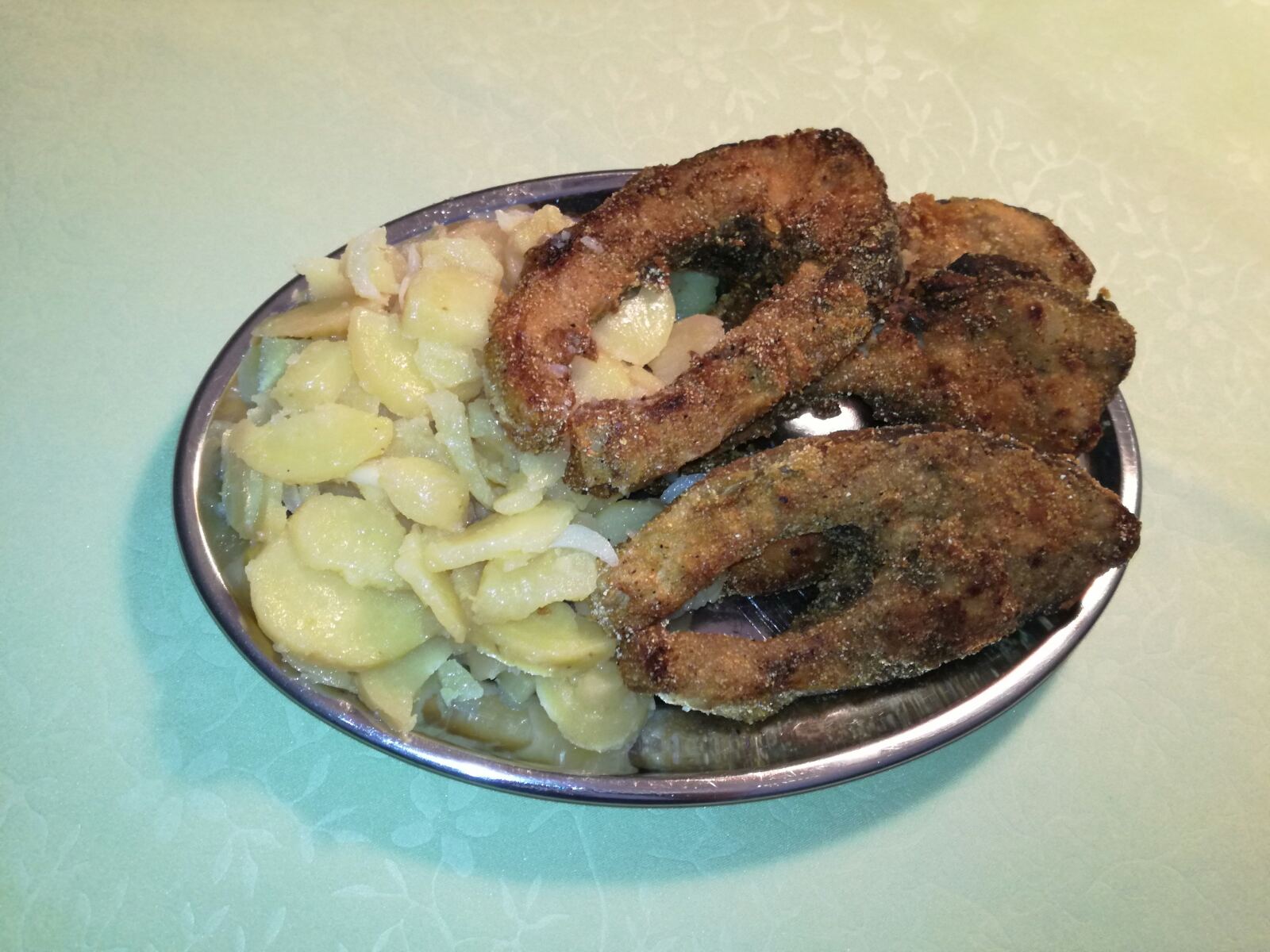
My aunt's fried carp with potato salad. (Private album/Dora Naletilić)
Homemade noodles are a close second in “popular Lent dishes in Slavonia” category. They are more of a side dish these days, however, poorer families who didn’t always have access to fish had to find ways to feed themselves. Popular dishes with noodles in Slavonia are noodles with eggs, semolina ones that are sweet and fall into the category of scarcer meals. However, the ones with potatoes are probably the most popular ones, in Slavonia better known as “granatir”. Cheap ingredients like noodles, onions, potatoes, and more, fed generations of Slavonians who didn’t have the luxury of buying fish and other too expensive ingredients for them.
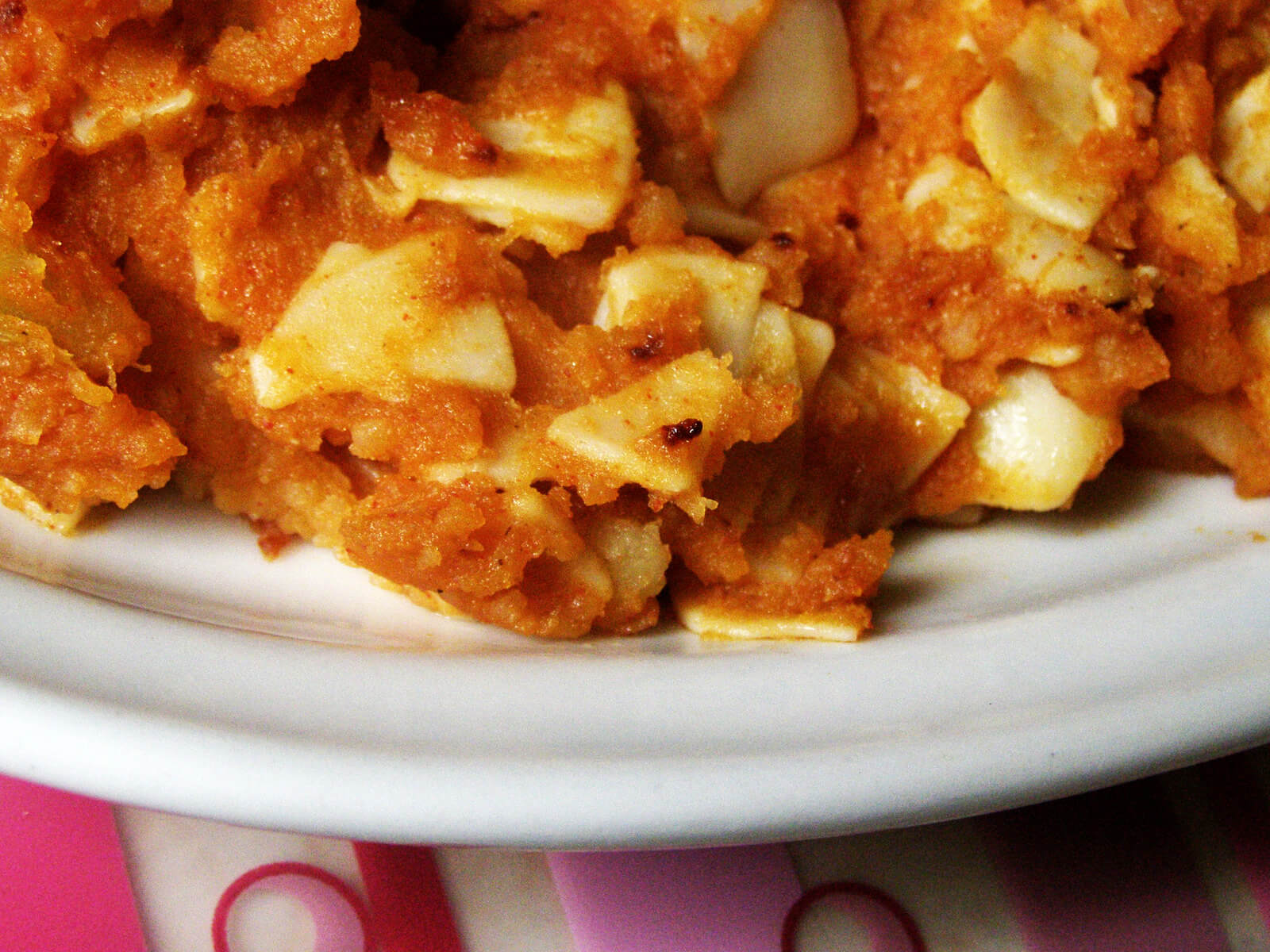
"Granatir" - noodles with potatoes. (Credit: Coolinarka)
Also, it is important to highlight that these dishes are made for one consummation a day so that people fasting during Lent experience penance.
As said at the beginning of the article, Lent has started and the time of “sacrifice” has begun. These times do not have the splendor of food, as usual, however, it only shows the resourcefulness of people during fasting and difficult times. Even though Slavonia is known for its heavy, meat-based food, these times, like Lent, show that this region is very versatile and can make a dish accessible to all. You don’t have to be a Catholic or even a believer to try these foods, just come and get into the spirit of Slavonia.
For more, check out our lifestyle section.
Expectations Were Exceeded: Thousands of Guests Traveled to Istria for Easter!
April 6, 2021 - Despite the epidemiological situation that has put the tourism sector on a hold, the Istrian County Tourist Board is satisfied with the number of guests that arrived in Istria for Easter over the last week.
‘‘On a daily basis, Istria has had approximately 16,000 guests every day these days, which means that we will realize slightly less than 50,000 overnight stays, led by Germans and locals’’, says the director of the Istrian County Tourist Board Denis Ivošević, commenting on tourist results in Istria over the past Easter holidays in a report made by Glas Istre.
‘‘If we compare it with an average year, say 2018, we can say that this year we are at some 50 percent of that. If we compare this year's results with the record year 2019 when Easter fell on a much later date, then we are at some 30 percent’’, Ivošević explains and confirms that, regardless of that result, ‘‘we can still be extremely satisfied’’.
‘‘Namely, we were afraid - he continues - that many Germans would return to their homes because their authorities put us on the red list. However, fortunately, this did not happen so we can be satisfied with the numbers’’.
Ivošević adds that even though they’re aware that several German tourists decided to stay home or choose nearer options, the numbers were still good considering the current situation.
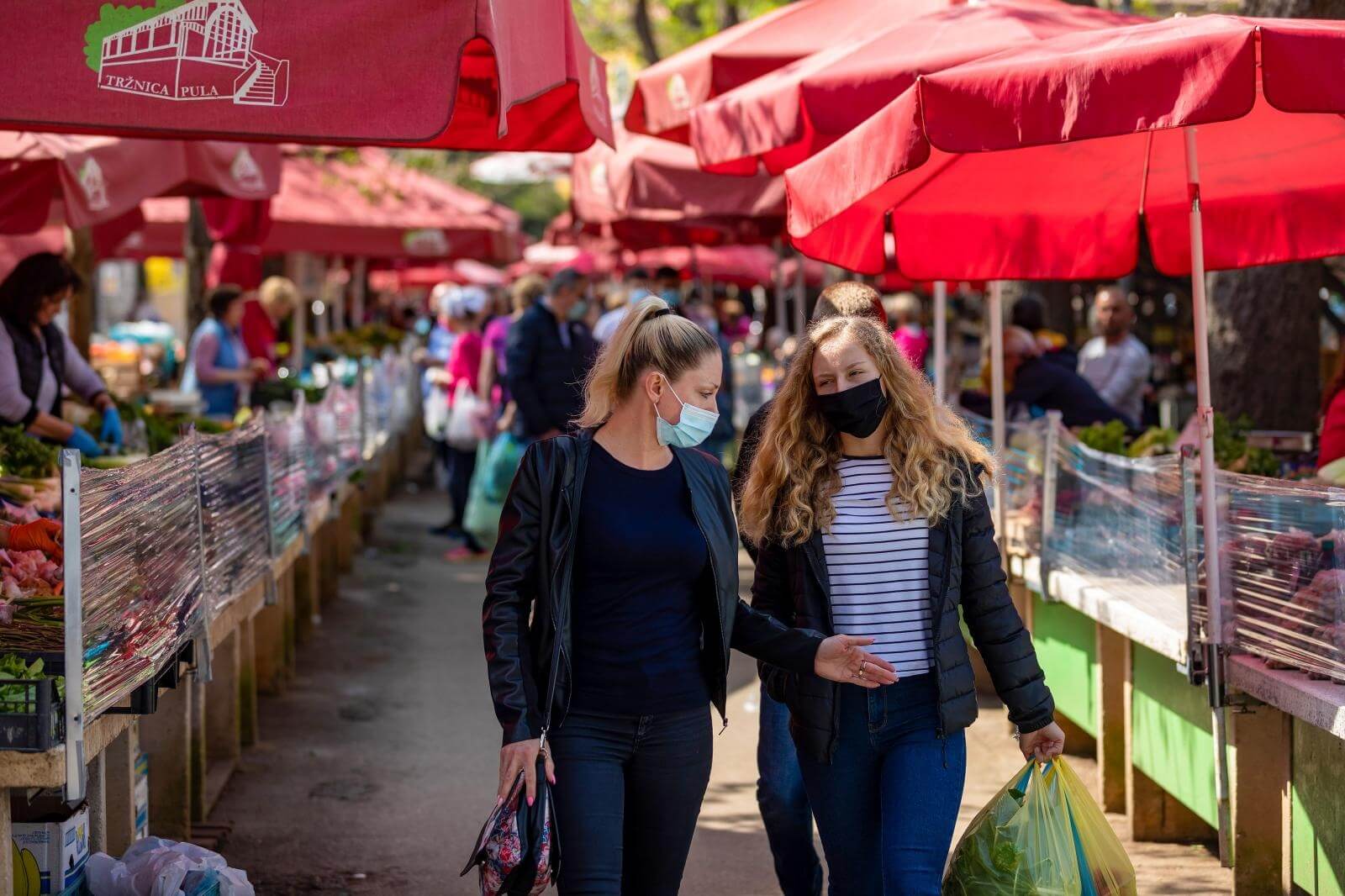
Credit: PIXSELL
Around 50 hotels opened for the Easter holidays in Istria, and among them were both large hotel houses and small family hotels. Also, about 25 camps received guests, and so did a large number of private family apartments in the interior of Istria and on the coast.
Regarding the structure of guest arrivals, there were six and a half thousand German tourists that arrived in Istria. This was followed by about five thousand local tourists. Unfortunately, the number of Slovenes, Austrians, and Italian tourists was considerably low in comparison to previous years.
‘‘Approximately 35 percent of all tourists stayed in hotels this weekend, 35 percent in private accommodation or apartments, while 25 percent of guests decided to camp’’, says Ivošević, and adds that the most visited Istrian destinations for the Easter holidays have always been Poreč and Rovinj, and so they were this year again.
‘‘About 4,000 overnight stays were realized in Pula this Easter, which is satisfactory considering the epidemiological situation in the world’’, says the director of the Pula Tourist Board Sanja Cinkopan Korotaj, adding that 40 percent of guests chose private accommodation, 24 percent of them chose hotels and 18 percent decided for camping.
''The structure of guests in Pula seems to be a copy of the situation in the whole of Istria, so we had 40 percent of Germans, 34 percent of domestic guests, and 12 percent of all Austrians, Italians, and Slovenes''.
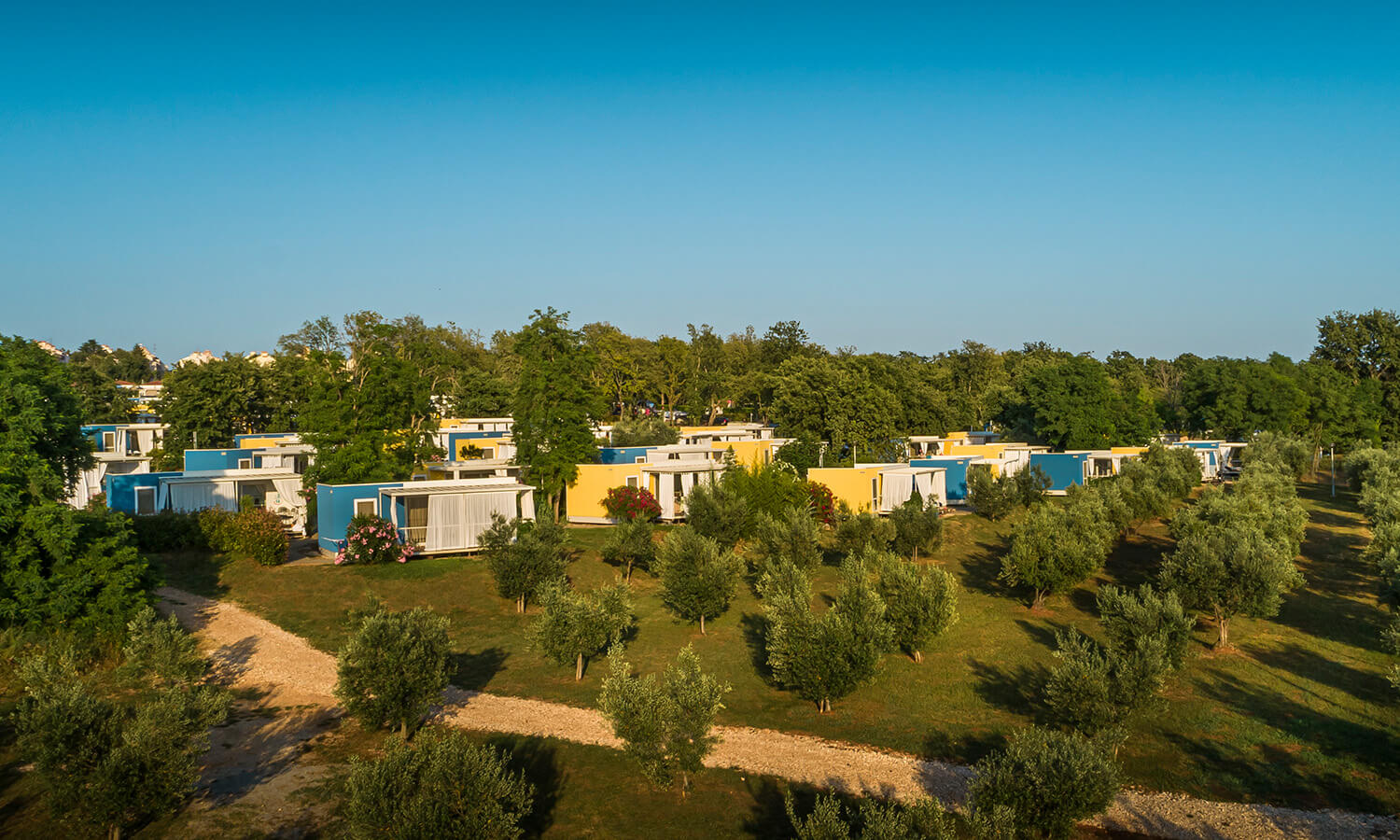
Credit: Aminea Maravea Camping Resort (Novigrad)
‘‘This year's figures are above our expectations, so we can be satisfied. The number of arrivals this year is an indication that people want to travel and no longer want to be locked in their homes, cities, or states. People want freedom. Seven hotels were opened in Poreč and about 10,000 overnight stays were realized in four days, which is satisfactory considering the conditions in which we operate’’, says the director of the local tourist board, Nenad Velenik. ‘‘However, we see that the structure of guests here is a bit different, so in Poreč the locals are in the lead’’.
‘‘The occupancy by markets is interesting. Namely, in the first place are guests from Croatia, followed by Germans, and in third place are tourists from the Czech Republic, followed by Austrians and Swiss. Therefore, traditional markets such as Italian or Slovenian have been completely absent this Easter, explains Velenik and hopes for a more favorable epidemiological situation and greater vaccination of the population, especially tourist workers, as the May Day holidays are getting closer. Thus, we can once again come to the green list of countries in our major markets’’, concludes Velenik.
Ivošević ends by saying that they were unable to get information on the specific numbers of many other tourist boards since they did not answer the official phone numbers. Thus, these Easter holidays will remain short of the tourist figures of Umag, Labin, Medulin, Rovinj, and Fažana.
For more about travel in Croatia, follow TCN's dedicated page.
President Milanović and Parliament Speaker Jandroković Issue Easter Messages
April 3, 2021- President Zoran Milanović on Saturday extended his best wishes to all Christian believers who celebrate Easter according to the Gregorian calendar.
He said that this year, the faithful worldwide are celebrating this greatest Christian holiday while facing challenges put before them by the coronavirus pandemic and related threats to their health and their social security, and peace.
"In these difficult and challenging times, the Easter holiday should remind us of the most important religious and universal secular principles such as goodness, unity, and love for our neighbors, and should strengthen in all Christian believers the faith and hope of a victory of light and a new beginning," the President said in his message posted on Facebook.
"Let us recognize and accept the principles of goodness, unity, and love as a universal way of life and a path to a better tomorrow. May this greatest Christian holiday encourages us to foster the values of mutual solidarity, in particular with our compatriots who need assistance in this challenging time," Milanović said.
Jandroković calls for solidarity and unity.
In his message, Parliament Speaker Gordan Jandroković also called for solidarity and unity in the present challenging circumstances caused by the coronavirus pandemic and last year's earthquakes.
"Our thoughts are in particular with our compatriots in need and with all the people suffering illness, loneliness, suffering, injustice and sometimes a feeling of hopelessness," he wrote and added: "Easter is a time of hope because life conquers death and light conquers darkness, giving us the strength to overcome all of life's difficulties. May the atmosphere of Easter bring joy and peace to everyone in need and call us to stop and question ourselves and our attitude towards others."
"By celebrating Easter, we celebrate universal, timeless, and fundamental human values that rest on love and encourage our faith and hope of a better tomorrow. We also pray for our Croatian homeland, recovery and stability, and a better and happier life for our citizens. In the spirit of Easter, let us again express our gratitude to both known and unknown heroes who are taking care of others' health and lives and to our fellow citizens who are generously exposing themselves to help their neighbors. Let us follow this example of accepting the message of Easter and fostering solidarity and unity among people. Each of us can set an example and make our society better," Jandroković said in his message.
To read more about news in Croatia, follow TCN's dedicated page.
22,000 Tourists Staying in Croatia Ahead of Easter
ZAGREB, 2 April, 2021 - More than 22,000 tourists are staying in Croatia ahead of Easter, including 17,000 foreigners, and although the number is expected to increase over the holidays, turnover is not expected to reach the pre-pandemic levels, National Tourist Board director Kristjan Staničić said on Friday.
"Considering all the circumstances, we don't expect for the coming Easter holidays the level of turnover from previous years and previous Easter holidays but, by adhering to all epidemiological measures and protocols, we expect tourism activities, with an emphasis on the domestic market," he told Hina.
Since the school spring break follows the Easter holidays, more domestic tourists are expected next week, alongside those from Germany, Slovenia, Austria, Italy and the Czech Republic, he said.
More than 130 hotels and 60 campsites are currently open and most tourists are staying in Istria County, the northern Adriatic Kvarner region and Split-Dalmatia County, Staničić said, calling on all citizens and tourists to behave responsibly.
For more about travel in Croatia, follow TCN's dedicated page.
Hotels in Croatia Receiving Reservations, Private Renters Still Waiting
March 29, 2021 - While it was expected last year that guests from other countries would arrive just for the summer season, accommodations owners hoped that this year they could travel even sooner. However, as we enter the Easter holidays, it hasn’t been the case.
HRT Vijesti reports that the scenes from April 2019 for tourist workers are now just a dream, despite the fact that this year there are more tourists in the Zadar area than last year when the country was immersed in a complete "lockdown". Most are domestic tourists. Due to the unfavorable epidemiological situation, the expectations for Easter are also bad.
‘‘We are also afraid that the reservations we have can be canceled as well. Entries to Croatia have been simplified with these quick tests, but unfortunately returns to neighboring countries are complicated’’, said Tomislav Fain, president of the Association of Croatian Travel Agencies.
It is known that, although last year tourists from countries such as the United Kingdom or the Netherlands could travel to Croatia, many had to cancel their flights or reservations. This is due to the last-minute measures imposed by their respective governments, in which they were forced travelers to serve a certain time in self-isolation upon their return. Local authorities fear that this could be repeated this season.
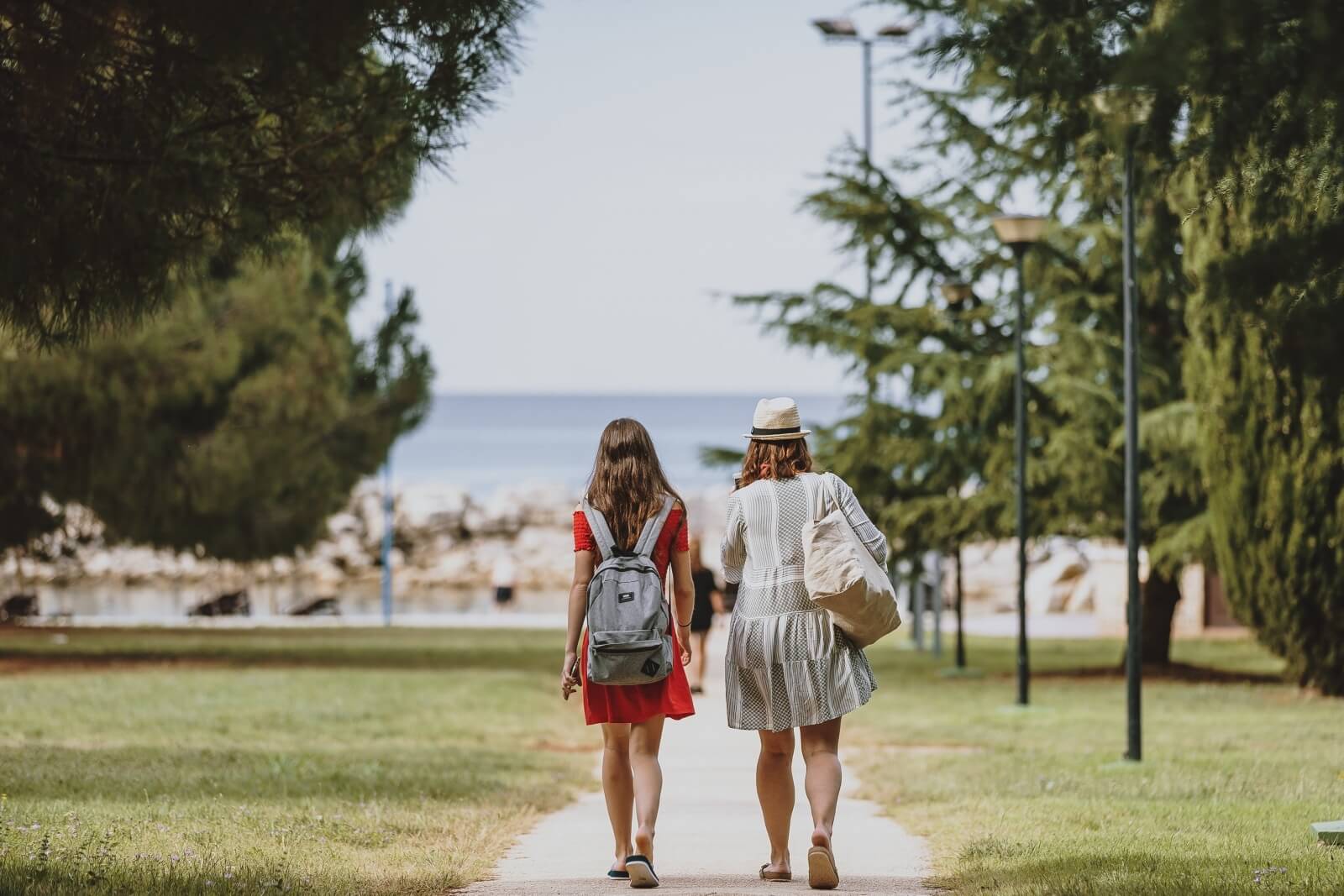
(Credit: PIXSELL)
Mostly domestic guests are expected. Frane Skoblar of the Turisthotel believes hostels in the pandemic crisis have pulled out the “thickest end” because of their attachment to air traffic.
The thick end was also drawn by private renters who have almost no reservations. On the other hand, hotels and large resorts claim that they are satisfied with reservations for the holidays.
‘‘We are mainly focused on the Croatian market, and some guests from Austria and Slovenia are also coming’’, said Goran Sremec from Falkensteiner Hotel & Spa Ladera.
Guests feel safe in the campsites as well. Mišela Lastrić (Falkensteiner Hotels & Residences Borik) says that they expect increased interest from domestic guests and that the booking is very good for now. She adds that they are currently at more than half capacity.
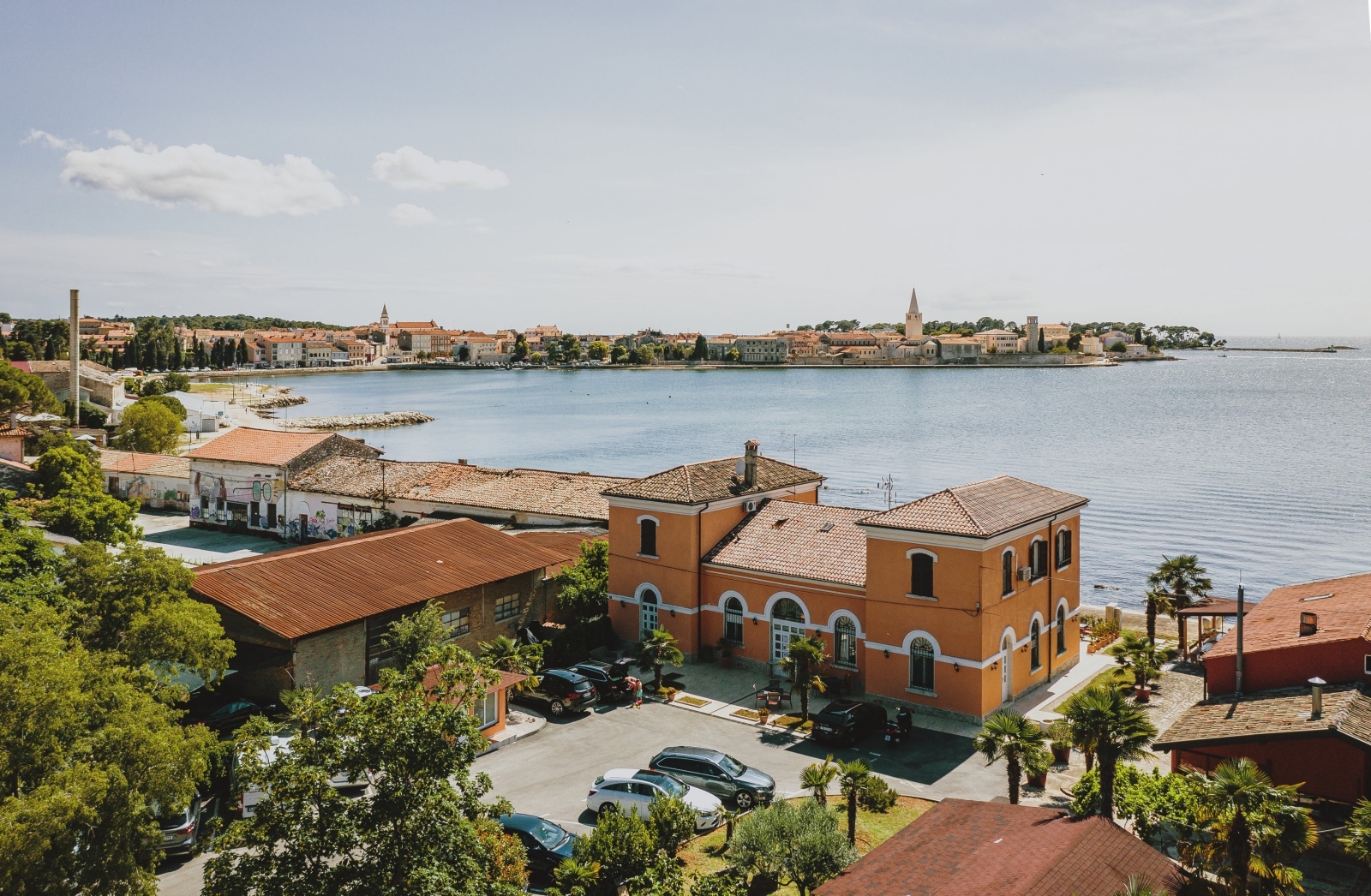
(Credit: PIXSELL)
The pandemic has completely changed the tourist picture all over the world, including on our coast.
‘‘There will certainly be no Slovene tourists at this moment. On the days of Corpus Christi, which come after, German tourists traditionally arrive. You know what instructions they have.’’, said Mario Paleka, director of the Zadar Tourist Board.
All private accommodations and tourist workers expect the first large number of tourists to arrive in June if the situation allows them to spend their holidays on the Adriatic during the COVID pandemic, which depends mostly on the vaccination process through Europe.
For the latest travel updates and COVID-19 news from Croatia, CLICK HERE.
13,500 Tourists Registered in Croatia for Easter
April 12, 2020 - There are 13,500 tourists registered in Croatia for Easter this year, and most of them are on Vir Island.
Dnevnik.hr reports that thousands of tourists will still spend Easter in Dalmatia this year. While some are hiding from the coronavirus, others are stuck here and unable to get back home. Most tourists, however, are on Vir Island.
Namely, out of the 13,500 tourists registered across Croatia, there are currently 600 tourists on the still corona-free island.
Barbara and Atila arrived in Croatia a month ago and have been staying in a weekend house on the island of Vir instead of an apartment in Budapest.
"Everyone would like to come here now, of course, but they need to wait a little longer," Atila says, adding that he followed the news and prepared his family to go to Croatia as soon as the pandemic appeared in China.
At a time when the coronavirus pandemic has taken over the world, Vir has become their haven.
"The tourists who found themselves on Vir at the time when the measures were announced are now sharing the fate of the corona crisis with us," says Kristijan Kapović, Mayor of Vir Municipality.
Barbara from Hungary says she feels completely safe on Vir, too.
"I feel safer here than in Hungary because there are no infections on Vir," says Barbara.
The Vir Crisis Headquarters says there are no infected people because they adhere to all the rules. However, a few days ago, the fishing rules were broken by two Czechs who, after a 20-hour search, were found on the high seas with high temperatures.
"The temperatures they had probably came from being outside all night. But no coronavirus was detected," says Antonio Vucetic, Chief of Vir Municipality's Civil Protection Headquarters.
Around 600 tourists, mostly 'weekenders', will welcome Easter on Vir.
"All of them are welcome, all of them are registered, and everyone who changes their place of residence for more than 24 hours belongs to the status of a tourist," explains Srdjan Liveric, director of the Vir Tourist Board.
And not only Croats are among them.
"They are from central Europe, from those 700-800 kilometers around Vir. There are Slovenes, Hungarians, Slovaks, Poles, Czechs, Germans, Austrians, Bosnians, from the places that surround us. Vir is an auto destination," says Kristijan Kapović, Mayor of Vir Municipality.
Currently, out of the 13,500 tourists in Croatia, 3,800 of them are from abroad. Thus, nearly 10,000 Croats are likely escaping the coronavirus in their weekend homes.
The least are registered in Dubrovnik-Neretva County, while in some counties, tourist numbers are rising despite the pandemic.
Zadar County ensured that it was a unique county in Croatia during this corona period. Specifically, in the corona-fueled March, and the first quarter of 2020, they recorded 5 percent more overnight stays than last year.
Vir is also convinced that this season will be an advantage for them, concluded Dnevnik.hr.
To read more about travel in Croatia, follow TCN's dedicated page.
Kvarner Records 100 Percent Increase in Tourists Over Easter Holidays
As Morski writes on the 25th of April, 2019, over the Easter holidays, 28,500 guests stayed in Kvarner, accounting for 99,000 overnight stays, which is a massive 100 percent increase when compared to the same period back in 2018, according to the Kvarner Tourist Board.
According to the official data from the eVisitor system, 28,500 guests spent 99,000 nights in Kvarner over four Easter holiday days (from Friday to Easter Monday).
The numbers from not only last year, but also from 2016 and 2017 prove the fact that during the Easter season this year, Kvarner was visited by a record number of guests. Thus, this year, 37 percent more overnight stays were realised when compared to 2017, when the Easter holidays fell during the same period of April, and even more incredible 147 percent more than 2016 were recorded, when the Easter holidays fell earlier, at the end of March.
In more than 100 of Kvarner's hotels and in as many as 25 camps, as well as a large number of holiday homes and private apartments, guests from Germany, other parts of Croatia, Austria, Italy and neighbouring Slovenia made up large numbers. German guests realised 25 percent of the total number of overnight stays, while domestic guests and guests from Austria realised 14 percent of the total number of overnight stays, with guests from Italy making up 11 percent.
Most of the overnight stays were realised on the island of Krk (32,300), followed by the Opatija riviera (23,400), the island of Lošinj (15,500), the Crikvenica-Vinodolski riviera (10,000), Rijeka and its surroundings (6,300), on the island of Rab (5,500), the island of Cres (5,300) and Gorski Kotar (850).
Nearly half of the overnight stays (49,000) were realised in hotels across Kvarner, most of which open on the Opatija riviera. 23,000 overnight stays were spent in private accommodation and in camps, most of them on Kvarner's numerous islands, account for 22,000 overnights.
In the spirit of the Easter holidays, Kvarner's hosts across the region prepared a large number of events for guests, from traditional cultural and entertainment events to gastronomic, religious and nature-related activities.
''In the last eight years, if we only look at the [main tourist] season, we're talking about a jump of as much as 90 percent, while in terms of the total number of overnight stays for the same period we've seen an increase of 50 percent. This marked increase in the number of guests, both foreign and domestic, shows us that we have a well-established development strategy based on our activities and programs, with the emphasis on filling out the period outside of the main summer tourist season.
The performances at this year's fairs and presentations on our strongest markets - Germany, Austria, Italy and Slovenia - gave us a good insight into the beginning of this tourist year and what those employed in tourism in Kvarner can expect,'' stated dr.sc. Irene Peršić Živadinov.
Make sure to follow our dedicated lifestyle page for much more.
Intangible Heritage of Croatia - Decoration of Easter Eggs with ''Oplet'' Technique
Easter is upon us once again, time to look at more of Croatia's intangible heritage which ties in with this festive period.


